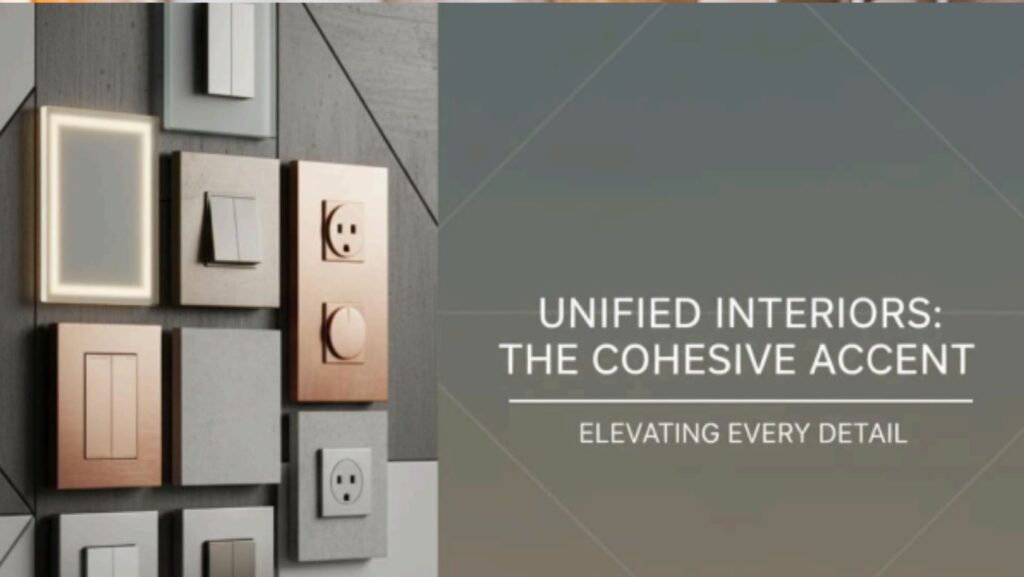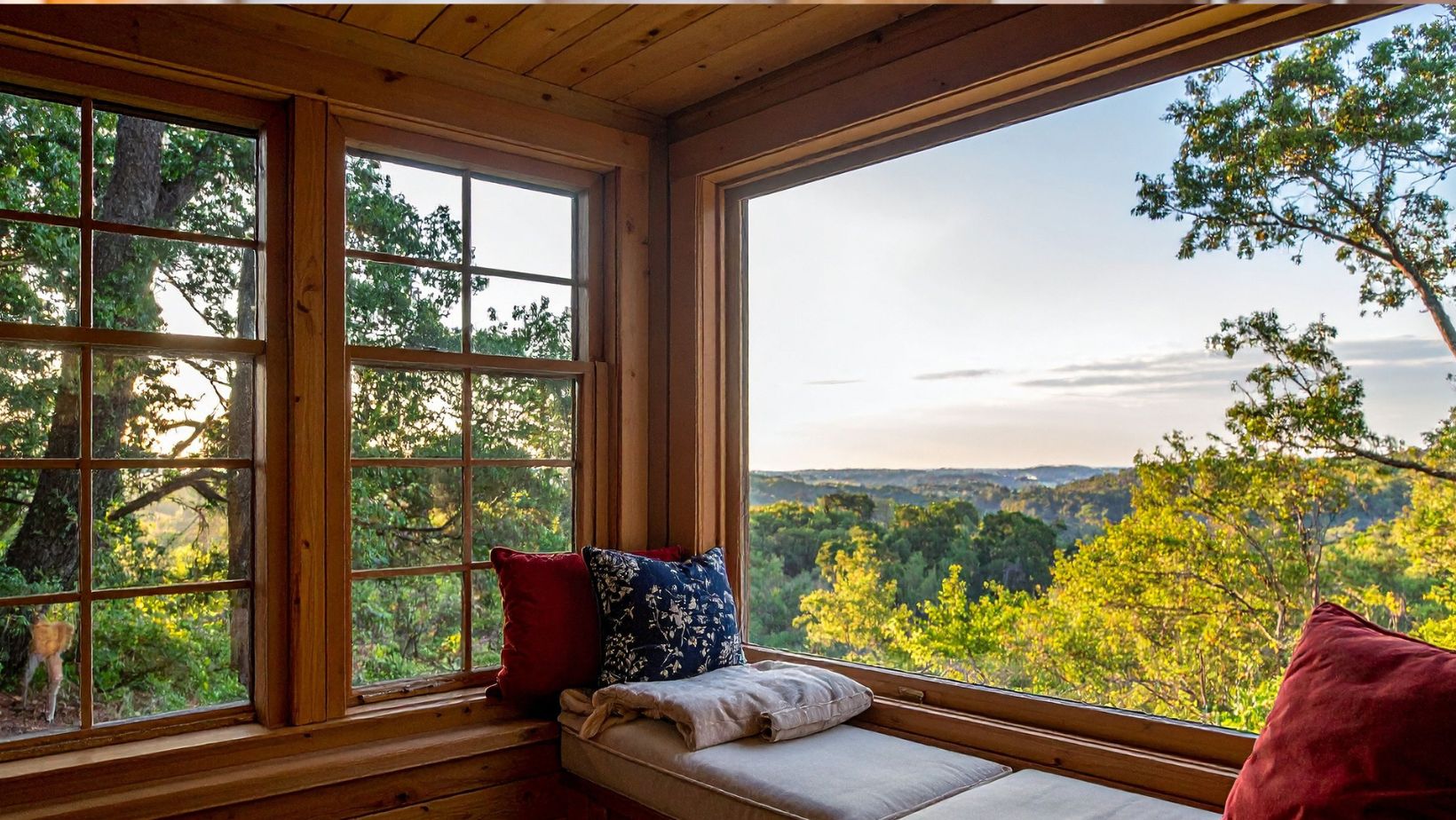
You’ve painted the walls, arranged the furniture perfectly, and hung your artwork just right. But something still feels off. The room looks unfinished, like it’s missing that final touch that makes everything click. Here’s what most people miss: it’s the small details that pull a space together. The trim around your windows, the hardware on your cabinets, and even your unique outlet covers can make or break your room’s overall look. These forgotten elements are the difference between a room that feels thrown together and one that looks professionally designed. They’re the visual threads that weave everything into one cohesive story
Why Details Matter More Than You Think?
Big furniture and wall colors get all the attention, but details are what your eyes actually notice. Think about it. You scan a room constantly, and your brain picks up on inconsistencies. Mismatched finishes, cheap plastic covers, and ignored corners create visual noise that makes spaces feel chaotic.
When all your small elements work together, your room feels calm and intentional. Matching your door hinges to your light fixtures to your cabinet pulls creates rhythm. Your brain relaxes because everything makes sense. This is what designers mean by “cohesive design.” The best part about focusing on details?
They’re usually cheap to fix. Swapping out basic white outlet covers for decorative ones costs less than a throw pillow. Updating cabinet hardware transforms kitchens for under a hundred dollars. These small investments deliver huge visual returns.
Hardware: The Jewelry of Your Home
Cabinet knobs and drawer pulls are like jewelry for your rooms. They’re small but mighty. Swapping builder-grade hardware for something with personality changes everything instantly. Your kitchen goes from bland to custom-looking in one afternoon of work.
Choose hardware that connects to other elements in your room. If you have black light fixtures, consider matte black pulls. Brass hardware warms up cool-toned kitchens. Mix knobs and pulls thoughtfully – knobs for doors, pulls for drawers is the standard approach that always works.
Don’t forget door hardware. Interior door knobs and hinges should match or at least coordinate. Nothing screams “builder grade” like brass hinges with chrome doorknobs. Pick one finish and stick with it throughout your home. This creates flow from room to room.
The scale matters too. Tiny knobs on big drawers look wrong. Oversized pulls on small cabinet doors feel clunky. Most drawers need pulls between 3 and 5 inches. Cabinet doors work with knobs around 1.25 inches in diameter. When in doubt, make a paper template first.
Trim Work That Transforms
Baseboards, crown molding, and window trim do more than hide gaps. They’re the frames that define your spaces. Skinny baseboards make rooms feel cheap. Thick, substantial trim adds instant elegance. You don’t need to be a carpenter to upgrade these elements.
Modern wall panels take trim to the next level without major construction. They add architectural interest to flat walls and create focal points that anchor your furniture arrangements. Picture frame molding, board and batten, or geometric patterns turn boring walls into features worth noticing.
Window and door casings deserve attention too. Wide, craftsman-style trim around windows makes them look bigger and more important. Simple flat trim feels modern and clean. Whatever style you choose, keep it consistent throughout your home. Mixed trim styles in the same room create visual confusion.
Paint your trim to make it pop or blend. White trim against colored walls is classic. Painting trim the same color as walls but in different sheens creates subtle sophistication. Black trim makes a bold modern statement. The key is making an intentional choice, not just accepting what’s there.
Switch Plates and Outlet Covers as Design Elements
Most people never think about switch plates beyond keeping them clean. But these little rectangles appear dozens of times in your home. Basic plastic covers stick out against beautiful walls like sore thumbs. They interrupt wallpaper patterns and break up painted surfaces.
Decorative covers come in every material and style imaginable. Brushed metal coordinates with stainless appliances. Wood covers blend with natural elements. Paintable covers disappear into walls completely. Some feature decorative patterns that become tiny art pieces.

Oversized covers hide wall damage and create visual weight that balances larger elements. Screwless covers look sleek and modern. USB outlet covers add function while maintaining style. These upgrades cost just a few dollars each but elevate your entire room.
Position matters too. Crooked covers catch the eye immediately. Covers at different heights in the same room look sloppy. Take time to align them properly. Use a level. Make sure the screws sit flat. These tiny adjustments make surprisingly big differences.
Textiles That Connect Everything
Soft elements like curtains, pillows, and rugs are the threads that literally tie rooms together.
They bridge the gap between hard surfaces and create visual connections across space. A rugthat picks up colors from your artwork and pillows creates instant cohesion.
Window treatments frame your views and soften hard edges. They don’t need to match exactly,but they should relate. Same fabric in different rooms. Same style in different colors. Same hardware throughout. These connections create flow without being boring.
Throw pillows are more than comfort. There are opportunities to repeat colors and patterns
throughout your space. Pull accent colors from artwork and spread them around through
pillows. Mix patterns by varying scale – large pattern, medium pattern, and solid. This creates
interest without chaos.
Don’t forget the often-ignored fifth wall – your ceiling. A painted ceiling or interesting light fixture draws eyes up and completes the room. Even something as simple as painting your ceiling the same color as your walls, but two shades lighter, adds sophistication.
Lighting as a Unifying Force
Light fixtures appear in every room, making them perfect for creating consistency. You don’t need matching fixtures, but they should speak the same design language. All black metal. All brass. All modern. All traditional. This creates a thread that runs through your entire home.
Lampshades matter more than people realize. Matching shades on different lamp bases creates instant coordination. White drum shades work everywhere. Black shades add drama. Patterned shades become art. Keep shade styles consistent within sight lines for visual calm.
Consider switch and outlet placement when arranging furniture. Nothing ruins a vignette like a random outlet in the middle of your gallery wall. Plan around these fixed elements rather than fighting them. Use furniture to hide poorly placed outlets. Incorporate switches into your design rather than pretending they don’t exist.
The Power of Repetition
Repetition creates rhythm that makes spaces feel designed. Repeat colors at least three times around a room. Use the same wood tone in multiple places. Echo shapes throughout your space. This repetition guides the eye smoothly around the room.
The rule of three works everywhere. Three matching frames. Three similar pillows. Three brass accents. Odd numbers feel natural and balanced. Even numbers can work, but need more careful placement to avoid looking matchy-matchy.
Don’t repeat everything, though. Too much matching feels like a furniture showroom. The goal is connection, not cloning. Vary one element while keeping others consistent. Same style frames in different sizes. Same pillow fabric in different patterns. This creates unity with interest.
Final Thoughts on Pulling It All Together
Great rooms aren’t about any single element. They’re about how everything works together. Start by identifying what you already have that’s working. Maybe it’s your wall color or a piece of furniture you love. Build from there, choosing details that support and enhance what’s already good.
Take photos of your rooms and look for disconnections. What stands out as not belonging? What could tie things together better? Often, it’s those overlooked elements like outlet covers, trim, or hardware that need attention. Fix these small things and watch your whole room improve.
Remember that cohesion doesn’t mean boring. Your room should reflect your personality while feeling pulled together. Use these overlooked elements as opportunities to add character. The details are where your style really shows. Make them count.
Frequently Asked Questions
Q: How do I choose the right hardware finish for my home?
A: Look at your light fixtures and faucets first. These usually set the tone. If you have chrome faucets, chrome or polished nickel hardware works well. Black fixtures pair with matte black or oil-rubbed bronze hardware. Brass is versatile and warms up any space. Stay within the same temperature (warm metals with warm, cool with cool), and you can even mix finishes thoughtfully.
Q: Should all the trim in my house match?
A: Yes, trim should be consistent throughout your home for the most cohesive look. This includes baseboards, door casings, and window trim. You can vary the size and style between formal and casual spaces, but keep the same color and general profile. Crown molding can be reserved for special rooms without appearing everywhere. Consistency in trim creates flow and makes your home feel larger.
Q: What’s the most impactful small detail I can change?
A: Switch plates and outlet covers deliver the biggest bang for your buck. They appear everywhere and draw attention when they don’t match your design. Upgrading to metal or decorative covers that coordinate with your hardware costs around $5-10 per cover and takes minutes to install. This one change can make your whole room look more expensive and thoughtful.
Q: How many different patterns can I use in one room?
A: The standard rule is no more than three patterns in one room, varied by scale. Use one large-scale pattern (like a bold rug), one medium pattern (curtains or accent chair), and one small pattern (throw pillows). Keep patterns in the same color family for safety. If you’re brave, a fourth pattern can work if it’s very subtle, like a textured solid. Always balance patterns with plenty of solid colors for visual rest.
Q: Can I mix wood tones in the same room?
A: Yes, but limit yourself to two or three wood tones maximum. Make one dominant and use others as accents. Woods in the same temperature family (all warm or all cool) mix easier than opposing temperatures. Connect different woods through similar grain patterns or finishes. A dark wood floor works with medium wood furniture if you repeat the dark wood in frames or accessories. The key is intentional placement, not random mixing.












